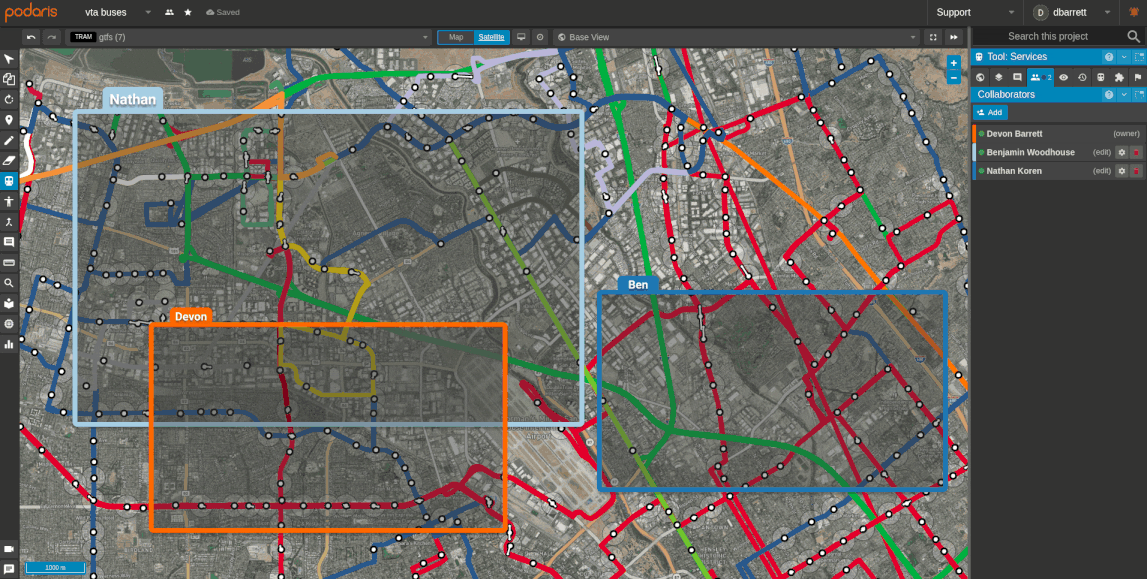As the only truly collaborative platform for transport planning1, Podaris unites technical and non-technical stakeholders in a single digital model, greatly facilitating cooperation across disciplines, and closing the feedback loop between planners and those with a vested interested in project outputs.
During the past year, we've revealed a huge number of improvements and enhancements to Podaris:Plan – our application for high-level planning and analysis – including demographic modelling for travel-time and catchment analysis, and the ability to plan scheduled services with unprecedented ease. But we’ve also been improving Podaris:Engage – our application for stakeholder presentation and engagement – to make sharing plans and getting feedback quicker, and more effective than ever.
Engage can be seen as a presentational window into the scenarios created in Plan. It replaces static screenshots and Powerpoint presentations by inviting curated individuals and groups to explore transport plans in a live and interactive environment, syncronised to Plan. Each ‘view’ constructed in Plan, can be styled to display only the most relevant aspects of your projects, exposing only selected networks, routes and isochrones.

In recent weeks, we've been enhancing the capabilities of Engage further, giving you not just the ability to present proposed route alignments, but to convey detailed service schedules as well. As Engage allows you to display your transport scenarios in individual tabs, you can easily prepare multiple proposals, and showcase, for example, comparisons between existing and proposed routes and services.
Clicking on a service now allows you to view a complete timetable, as well as the inbound and outbound patterns associated with that service. Within those timetables, stakeholders can quickly explore running times and frequencies across the service calendars that have been created in Podaris:Plan. By interacting with different services, stakeholders can put those frequencies in context, to understand how well-served communities are by the routes that run through them.

Stakeholders can see all of the overlapping routes on a busy corridor at-a-glance, and further inspect each one to understand more about the service. The same is true for stops - clicking on an individual stop will expose all of the services that call at that stop.
Viewers can select a stop and move between tabs to view different scenarios for that stop, allowing them to see how different interventions might affect the network, and the community, for better or worse.
But Engage has always been more than a presentation mode for Podaris projects. At its core is the ability for all permitted stakeholders to create geolocated comments across each of your tabbed views. These comments can form threads that facilitate conversation about your network and services - comments that are immediately synchronised within Podaris:Plan, allowing planners to quickly respond to community priorities in their plans.

This is how we see Podaris closing the feedback loop between planning and consultation, accelerating project development and promoting stakeholder buy-in.
All of these features are available within Podaris today. If you'd like to find out more about how they can benefit your team, reach out to book a demo with us now!
-
What do we mean by “truly collaborative”? There are other platforms which permit sequential editing by multiple users, but Podaris is the only platform which enables simultaneous real-time collaboration, by professionals and non-technical stakeholders alike. This enables a free flow of collaborative feedback loops, similar to planning charrettes where everyone is sitting around the same table. It’s a much more powerful form of collaboration.
 ↩︎
↩︎